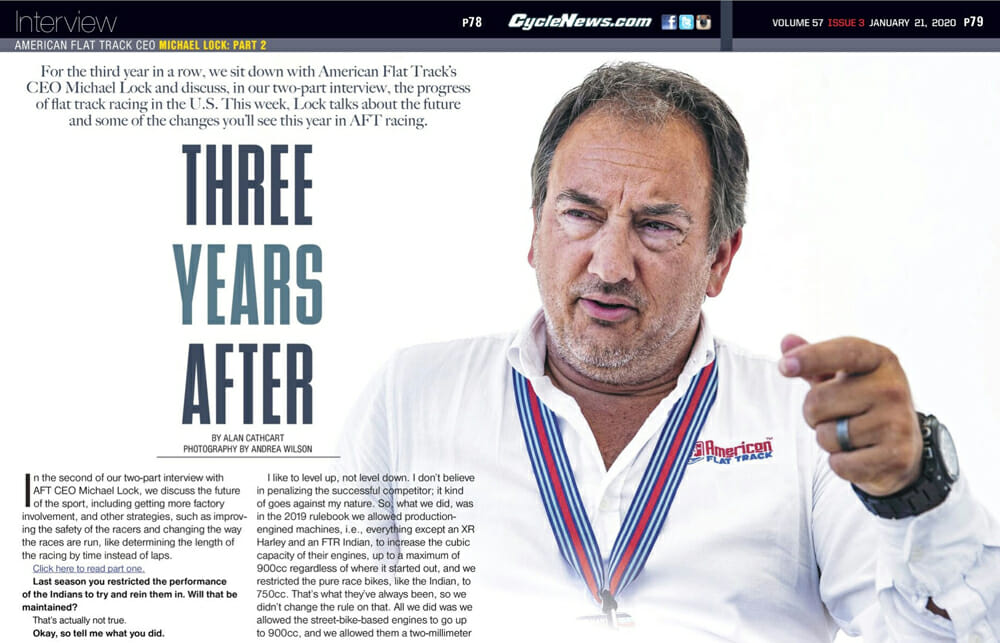Alan Cathcart | January 24, 2020
For the third year in a row, we sit down with American Flat Track’s CEO Michael Lock and discuss, in our two-part interview, the progress of flat track racing in the U.S. This week, Lock talks about the future and some of the changes you’ll see this year in AFT racing.
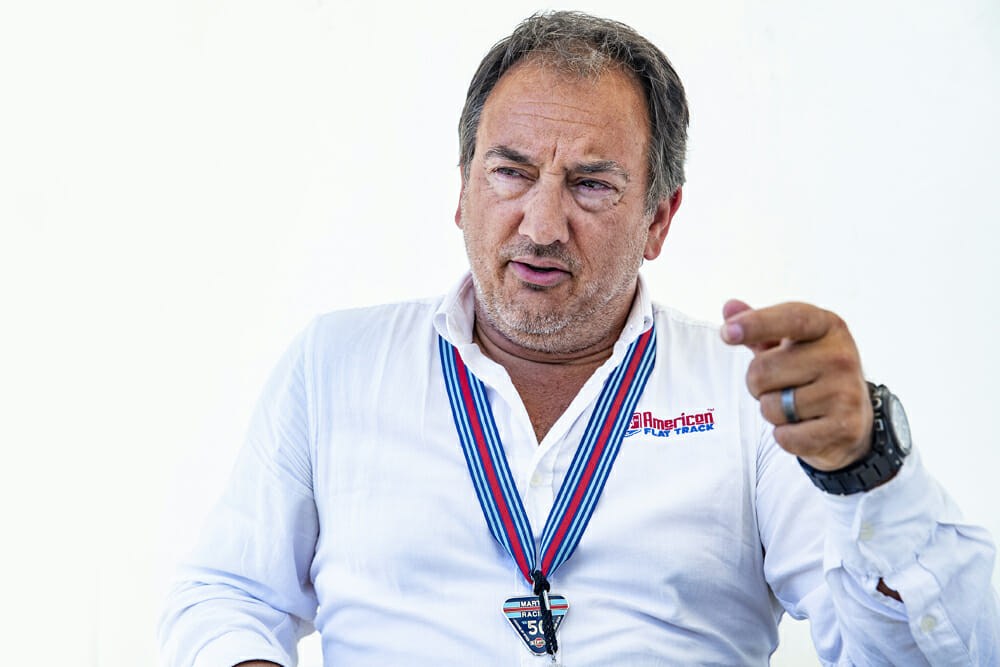
Photography by Andrea Wilson
In the second of our two-part interview with AFT CEO Michael Lock, we discuss the future of the sport, including getting more factory involvement, and other strategies, such as improving the safety of the racers and changing the way the races are run, like determining the length of the racing by time instead of laps.
Click HERE to read American Flat Track CEO Michael Lock Interview | Part 1
Last season you restricted the performance of the Indians to try and rein them in. Will that be maintained?
That’s actually not true.
Okay, so tell me what you did.
I like to level up, not level down. I don’t believe in penalizing the successful competitor; it kind of goes against my nature. So, what we did, was in the 2019 rulebook we allowed production-engined machines, i.e., everything except an XR Harley and an FTR Indian, to increase the cubic capacity of their engines, up to a maximum of 900cc regardless of where it started out, and we restricted the pure race bikes, like the Indian, to 750cc. That’s what they’ve always been, so we didn’t change the rule on that. All we did was we allowed the street-bike-based engines to go up to 900cc, and we allowed them a two millimeters-larger diameter for throttle bodies, because if they’re breathing through bigger holes, they need more gas. So, we changed those two rules, but we changed absolutely no rules whatsoever specific to Indian. We did change some other specs, but it was the same for everybody, so we went to a modern, unleaded race fuel, from the old leaded fuel we’d been using for an eternity. But otherwise we didn’t make any changes to the rulebook that specifically effected Indian. I know there was a lot of noise about it, including an open letter from Indian complaining about the changes. But we didn’t force Indian to change their bike in any way at all—all we did was, we raised the performance ceiling of the street-bike-based race engines.
Indian’s complained about the change at the time, and we had a lot of dialogue with them. Their main complaint was about the change in the throttle bodies’ diameter, which they said meant they would never win a Mile again. Not that they would lose on the TTs, but they would be uncompetitive in the Miles – yet last year they won every single Mile, and often filled the podium. So, I don’t think that Armageddon actually arrived.
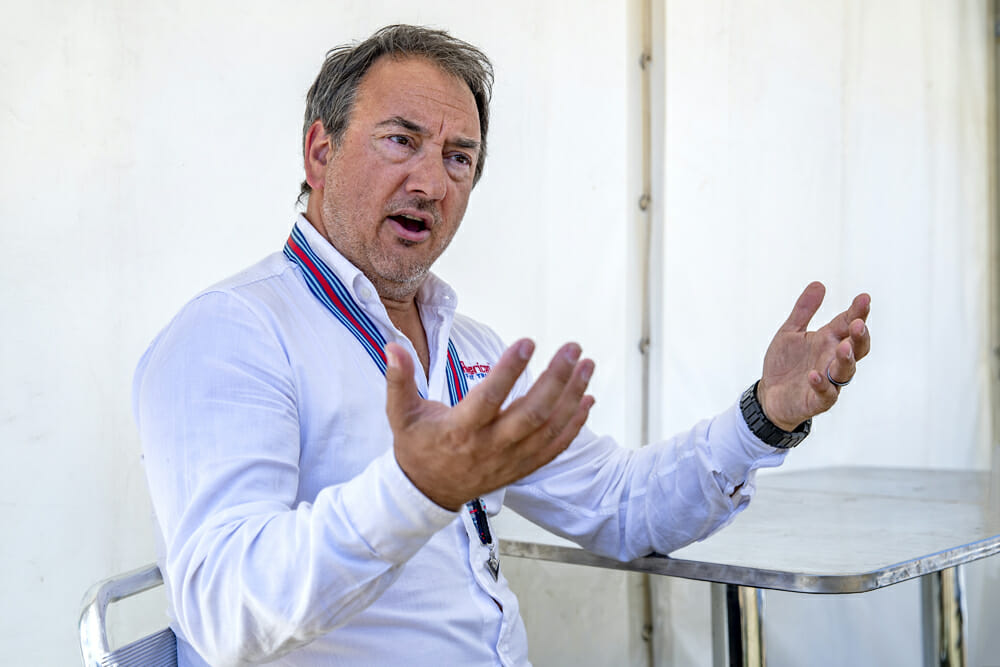 Lock wants to focus on rider safety and plans to make it a requirement that all SuperTwins riders wear airbag suits.
Lock wants to focus on rider safety and plans to make it a requirement that all SuperTwins riders wear airbag suits.
You’ve got three factory teams on the grid at the moment, but it’s now been confirmed that you’ll have KTM joining in in 2021, but with the bikes branded as Husqvarnas. What are your comments on that?
I’m delighted that we have another European brand which has officially turned its attention to America’s oldest motorcycle sport, as a vehicle for positioning and communicating its brand to American consumers. As you know, Husqvarna in the USA is seen as a cool, niche brand. I think it always has been, everybody’s fond of Husqvarna, and so, when the announcement came that they were going to really develop the street-bike range and pluck whatever technologies and platforms they needed from the KTM Group in order to develop the street-bike range, and therefore a street dealer network and street customers, for them to marry that together with coming to race in AFT, is exactly what we’ve been aiming for. So we’re delighted, and we’re looking forward to 2021.
Do you have any other manufacturers coming in in 2020?
There may be one other new one coming in for 2020, but I’m not at liberty to mention anything about them. However, there is a manufacturer which is actively developing an AFT bike and is looking at the logistics of putting a team together. They would do selected events in 2020 while they knock the bugs out of the bike, then come in full on in 2021. Watch this space!
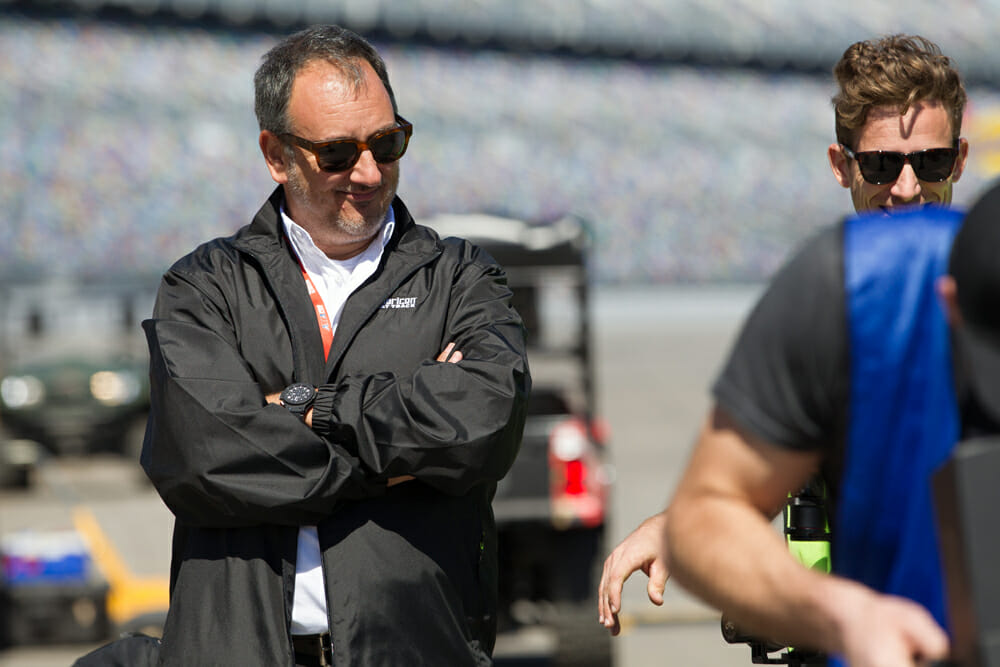 No one can deny that since coming on board, Lock has raised American Flat Track to a higher level.
No one can deny that since coming on board, Lock has raised American Flat Track to a higher level.
As far as the ever more competitive Singles class is concerned, it seems that the variety of bikes has not really changed very much, and certainly nobody has yet made a dedicated Singles AFT racer. Are you expecting that ever to happen, or not?
No, the way the rulebook is framed, this is a production bike class, and so it has to use the production chassis and engine of the relevant motorcycle. They can change wheel sizes and suspension, but the silhouette of the 450cc production motocross bike is an important element in that class. Because as we’ve seen in the Twins class, if you want to set up a team and buy two Indians, it’s $100,000 down before you do anything else—the quality and the performance level has been raised immeasurably, but with that comes cost. Flat track is traditionally a blue-collar sport in America, contested by kids in small towns you’ve never heard of, and we don’t want to lose that. So, the 450 Production class ensures that we have a relatively low entry cost, and it’s not only the cost, but also, it’s the familiarity. There are hundreds of thousands of kids all over America who ride dirt bikes, so to ride a dirt bike in flat track makes it a relatively easy transition.
Any changes for 2020 that will influence the way in which the racing is run?
We tweak and modify the rulebook every year in the light of experience, and sometimes, to answer a question. So, one issue that has really bugged me ever since I’ve been involved, is that we have these set number of laps for Main events, so it’s 25 laps for the AFT SuperTwins, and 15 laps for the Production Twins and the AFT Singles. Which is great, except that 25 laps at the Oklahoma City Remington Park Mile, takes about 18 minutes for the Twins, whereas on the New Hampshire short track, it takes about six minutes. And that’s always bugged me, I felt that we were short-changing the fans who were going to go and watch not only short tracks and TT’s, but also half-miles. You know, the half-mile has been half the distance of the full mile. So, one thing that we’re doing is we’re changing for Main events in 2020 and beyond, is that they will be timed races, so it will be X number of minutes, plus two laps. Which is a format that’s quite familiar to people who watch motocross for example, and just as critically is familiar for broadcasters, too. It plays havoc with our show, as I’m sure you can imagine, if we go to a short track weekend versus going to a Mile, so it will help us with scheduling for broadcasts as well.
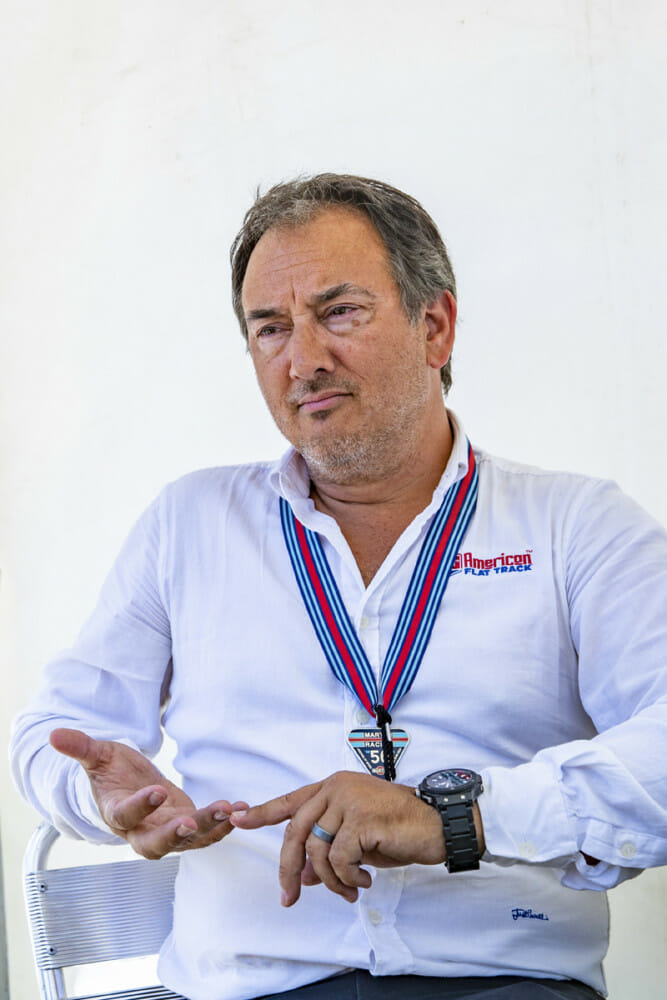 Lock has made a number of changes to the premier, now-called, SuperTwins class.
Lock has made a number of changes to the premier, now-called, SuperTwins class.
Viewed from outside, the one thing that’s still disappointing in AFT is that Harley-Davidson isn’t yet on the pace. And having spoken to Terry Vance, I know it’s a source of great frustration to him, too! He’s had to deal with race a production-based SuperTwin as opposed to a modern XR 750 race bike. How do you feel about this?
Look, it’s a touchy issue in the sport, no question, because in 2015 Harley Davidson took a strategic decision, that the replacement for the XR750 which had dominated the sport for 40 years, would be based on a street bike. And they did that to be able to marry the sport to the street bike audience so as to engage dealers and to engage fans, particularly younger ones, with a brand that had a very well communicated platform of innovation and change. That was the strategic decision they made, and no one can argue with that over time. But unbeknownst to them, Indian in parallel were also looking at getting involved in AFT, and said, “We need to do AFT now, because it’s on the rise, but we don’t have a street bike with a donor engine that we could build a race bike around. So, we’re going to have to do what Harley-Davidson did 40 years ago and develop a full-on racer.” There’s some irony in all of this, in that they both took decisions they felt were strategically correct at the time for what they wanted to achieve, but if you fast forward to now, one brand has been much more successful than the other. Well, okay, that’s racing, and I don’t think anyone doubts the racing prowess of the Vance & Hines team, I don’t think they’ve been sitting around enjoying the view, they’ve been working with what they’ve got, and they’re getting closer, you know. 2019 was their best season so far, they made the bike much quicker. I know they have very ambitious plans for next season, which will see them competing pretty aggressively in 2020, so I think there’ll be a new storyline there.
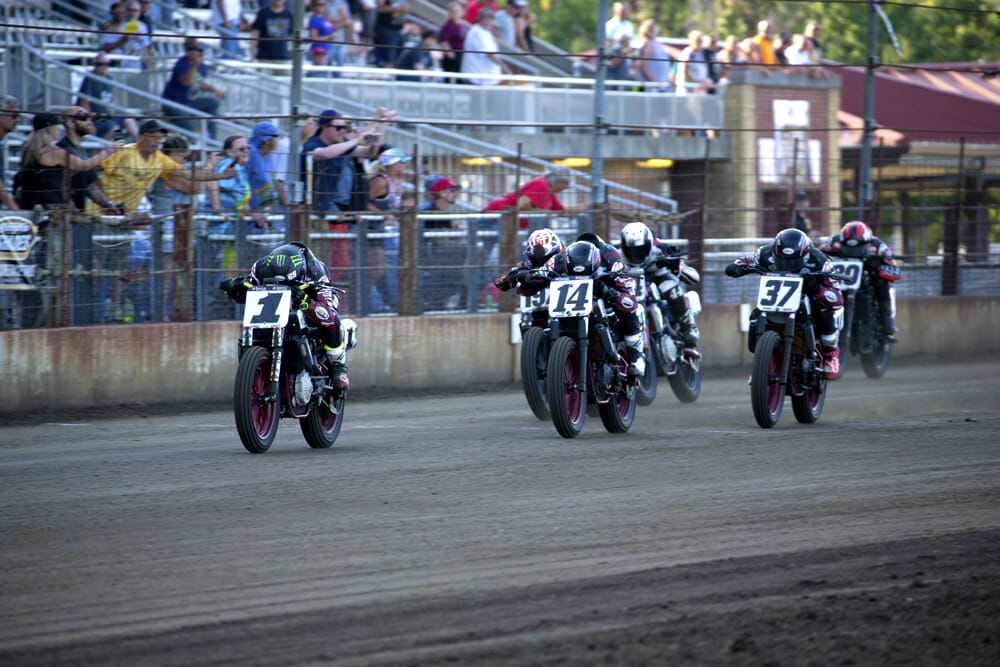 Flat track is catching more attention from the factories.
Flat track is catching more attention from the factories.
Did Harley punch the XG engine out to 900cc under the new 2019 AFT Twins rules?
I believe they had options on that, but I don’t think you need that bigger engine at every track. In fact, there is a school of thought which says that in flat track it’s easier to have too much power, rather than too little.
Okay, but on a Mile, you need to have the power! Are you aware of Harley having used the extra capacity on their Mile bike?
I think they used it several times but as and when it was beneficial.
So, three years down the line, are you pleased with what you’ve achieved so far with AFT? And what are you hoping to do in 2020 that you haven’t been able to achieve just yet?
There are two big things we want to achieve in 2020. One is the successful introduction of this new SuperTwins class, and with it being a banner for our sport worldwide. The SuperTwins format and the way that we’re going to shoot it for TV, means that we’re not only going to get a lot of new fans in the USA, but critically, it will start to create an International environment for flat track which is something very close to my heart. This sport is too exciting not to share, and I would like to suck fans in using digital technology to be able to broadcast our sport live, or on tape delay, anywhere in the world and to get people to take notice. The MotoGP model in road racing is a very successful formula, whose riders are household names all over the planet, and they’re compensated as they should be. I want our paddock to aspire to that, because I think that the sport has got the draw. So the first big strategic thing for us next year is to really promote the SuperTwins class, and to use broadcast technologies and channels to communicate it globally.
The other really important ambition I have for 2020 is to kick safety up to the next level. It’s no secret that our sport is inherently very risky—it’s fast, it relies on you breaking traction, and you don’t have a lot in the way of run-off or braking to help. So, it’s an inherently very technical, very tricky form of motorcycle racing, which is part of the reason why it’s so captivating to watch. But we know that going into the 2020s, the mood of the public and sponsors and OEM’s worldwide is that safety is of utmost importance. No one likes to see a tragedy, and we must protect these riders who week in week out place themselves at risk for the love of the sport, and for the entertainment of the fans. So, we’ve got a number of initiatives for next year that we’re going to kick in to aid with safety. The first one is that we’re mandating in SuperTwins the use of airbag suits. Airbags themselves are not inherently new, but what is new is that our series partner Dainese has modified the algorithms in their existing airbag technology to be much more sensitive to the use and the challenges of flat track. And we felt that that technology had moved on sufficiently that we were now ready and comfortable to mandate their use in our senior class, and to look at how quickly we could also mandate their use in the junior classes. It will make a big difference. Flat track racers fall off, even the good ones, and to have their vital organs and their upper torso much better protected I think is going to make a big difference. So that’s one thing that we’ve done, but we’re also looking at a new project to be able to have a rapid response unit at the tracks, basically following the riders on the first lap or two, and available at a second’s notice to be able to get to any medical emergency. We’ve looked at what they do in road racing and in Supercross, and we’re developing a system to be able to provide a much better, and much faster level of medical support in AFT than we have ever done before.
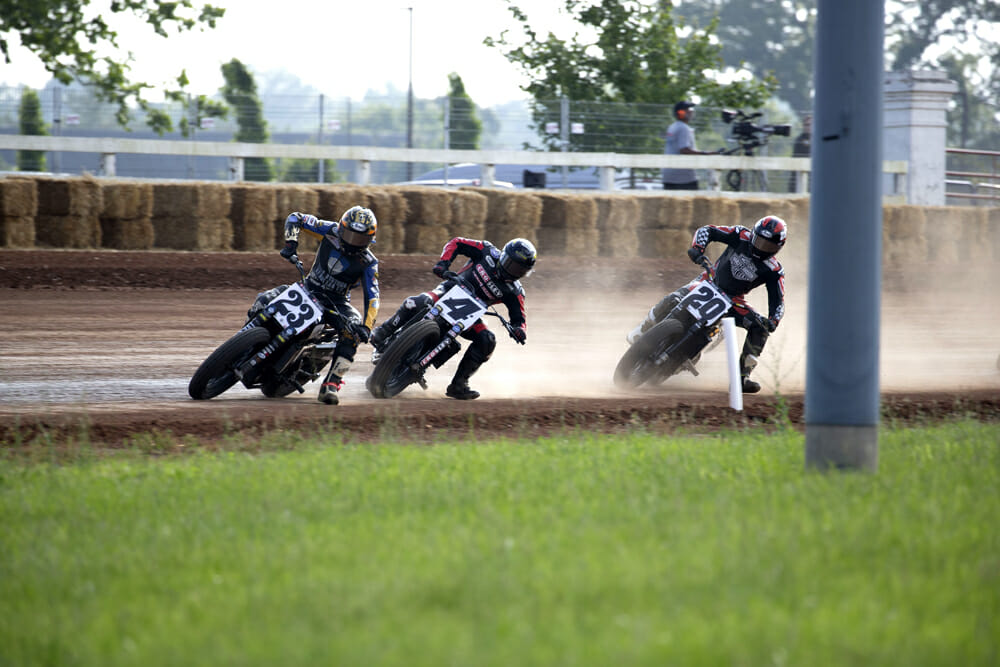 Lock is looking into a tiered system for major series sponsors.
Lock is looking into a tiered system for major series sponsors.
Presumably that trail unit would only ever be used on the Mile tracks, or could you use it on a half-mile, too?
I don’t see why not. If you think about the lap time on a half-mile as being 20-22 seconds, I think we certainly could. It’s turn one and turn three on the first lap that are statistically way out front in terms of risk for us, so we’re looking at a system whereby we can be on the spot as quickly as possible with the highest qualified medical resources. I think that might be a big step forward for the sport, and it’s probably long overdue. And there are some other things we’re doing as well with an overall strategy of decreasing risk, while increasing excitement. As you know, we’ve spent a lot of time and money in the last five years on AirFence, and we now deploy over $250,000 worth of AirFence at any Mile race. We’ve got a third of the whole track covered by AirFence, anywhere where there’s a corner, and that’s been a huge increase in safety which many of the riders will attest to. But we’re not done yet, there’s still more innovation to go, and as resources enter the sport it’s allowing us to really focus on trying to make a much more predictable and safer racing environment.
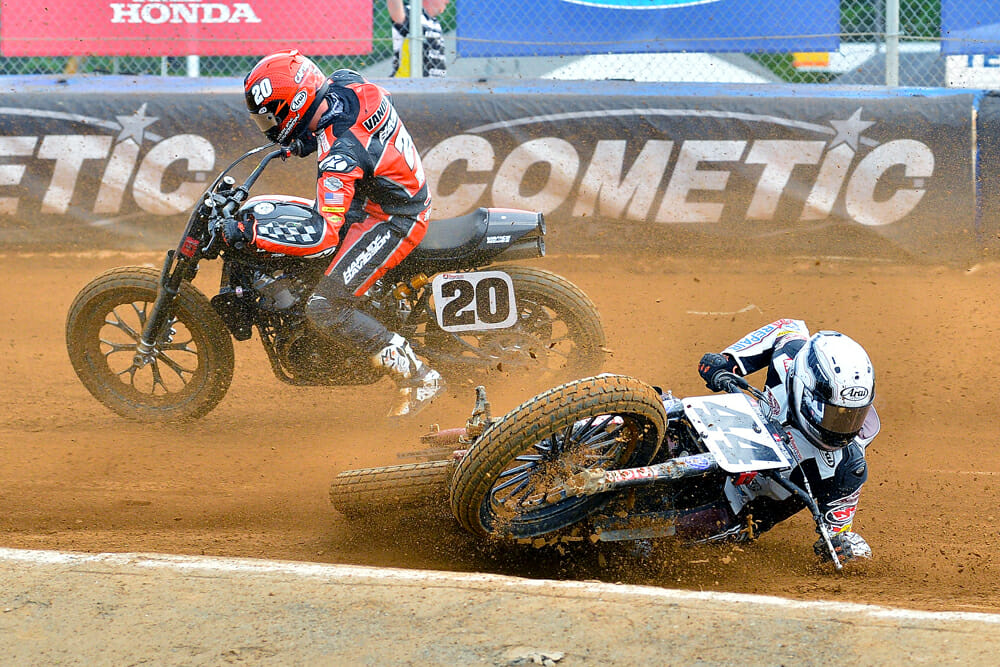 Lock sees rider safety as a priority in 2020.
Lock sees rider safety as a priority in 2020.
Now all this costs money, so do you have a series sponsor on the horizon yet for 2020?
What we’re doing is looking at the model a lot of sports are going into now, including for example NASCAR, where they’re moving away from category and title sponsors, and much more towards a model of tiered sponsorship. So, if you come in at the top tier as a sponsor, you get a lot of assets, and you get a lot of visibility and communications and support and positioning. And there could be three, four, five of those tiered, top tiered sponsors, and then there’ll be middle tier and lower tier. We’re not at the cutting edge of that, I’m just a student of what some bigger sports are doing. But what it means is, that we should have a much more flexible model, which hopefully means that we have a bigger bucket of revenue to be able to use to improve the sport.
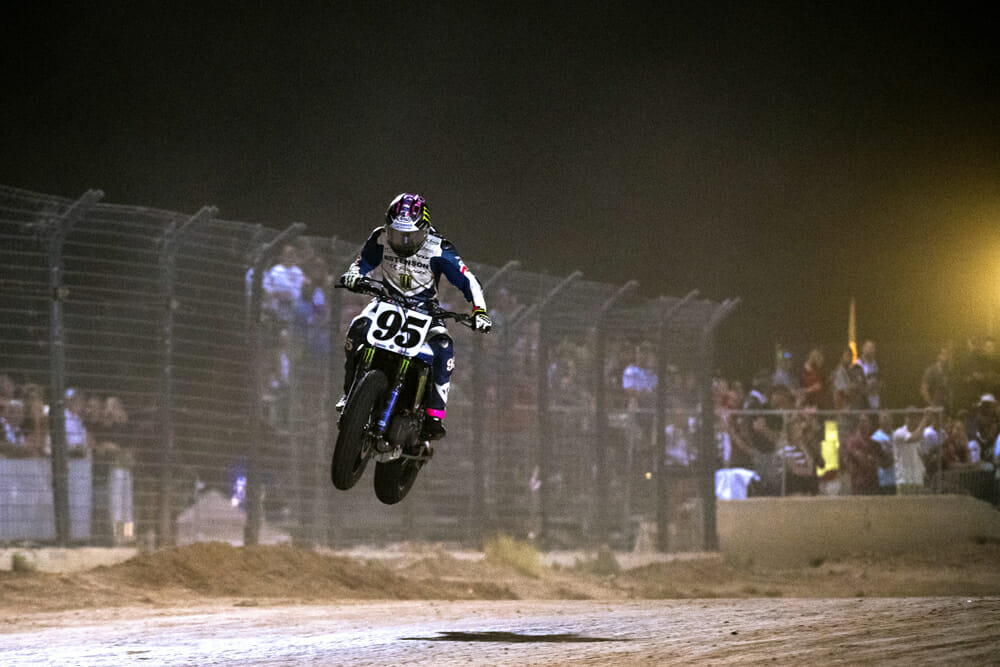 2020 promises to be another growing year for AFT.
2020 promises to be another growing year for AFT.
Will increasing the revenue mean increasing the prize money?
The purses in American Flat Track have risen pretty modestly in the last couple of years, because we’ve not had sponsors coming in specifically supporting them, other than a fine company named Roof Systems which is a commercial roof builder based in Dallas, Texas, headed up by Jerry Stinchfield. Jeffrey Carver is one of his riders, so is Jesse Janisch and, in fact, Shayna Texter was supported by him, too. Roof Systems were the title sponsor for the AFT Singles in 2019, and as part of their sponsorship package, they contributed towards the purse. They’ll be involved again next year in AFT. We need more sponsors like them, and we’re actively searching for them. Where we’ve made the most innovation is in contingency, meaning that we’ve recruited all the OEMS, and all the aftermarket companies to put contingency programs in place, so that if you’re riding a Yamaha, and you place in the top eight for example, or if you’re using a Dainese suit or if you’re using a Shoei helmet or an Arai helmet, then you get paid on results, and this has put a lot of money into the sport. Several riders have reported that it’s now a pretty significant part of their overall compensation, and we’re grateful for that, as well as them, because this helps place a growing sport on a firmer footing. CN
